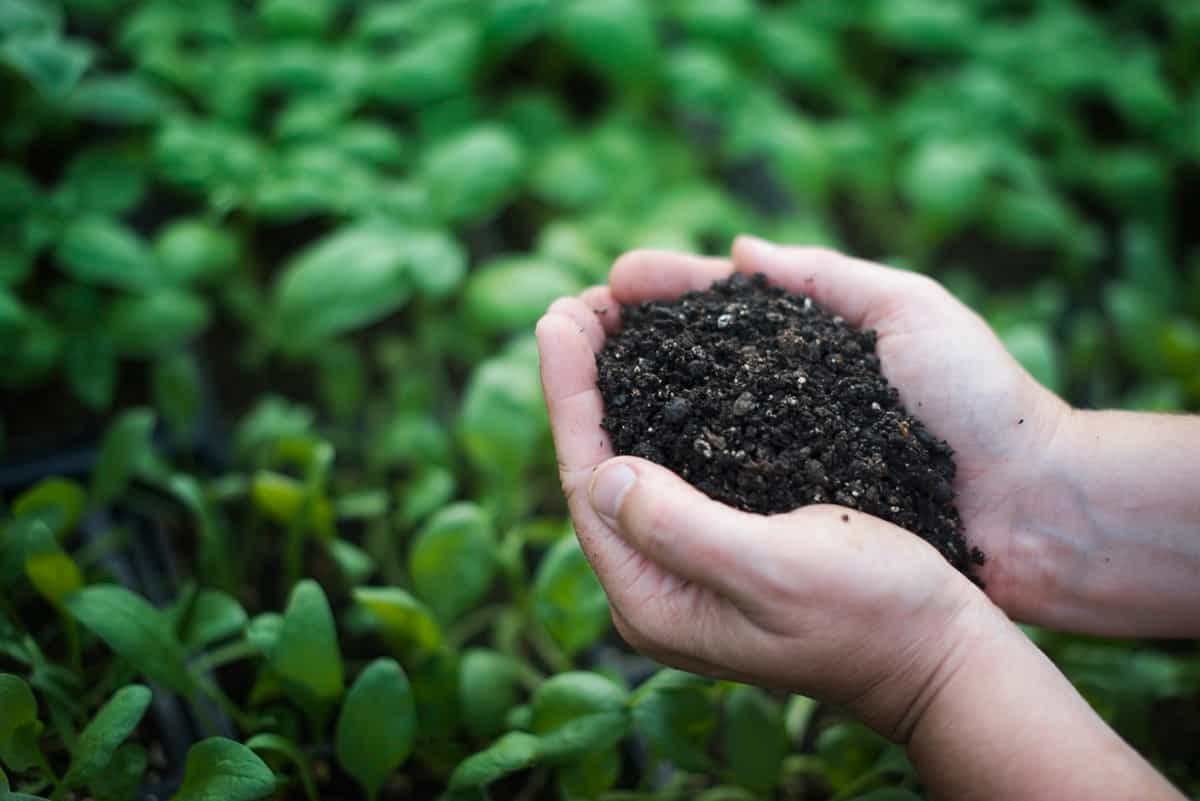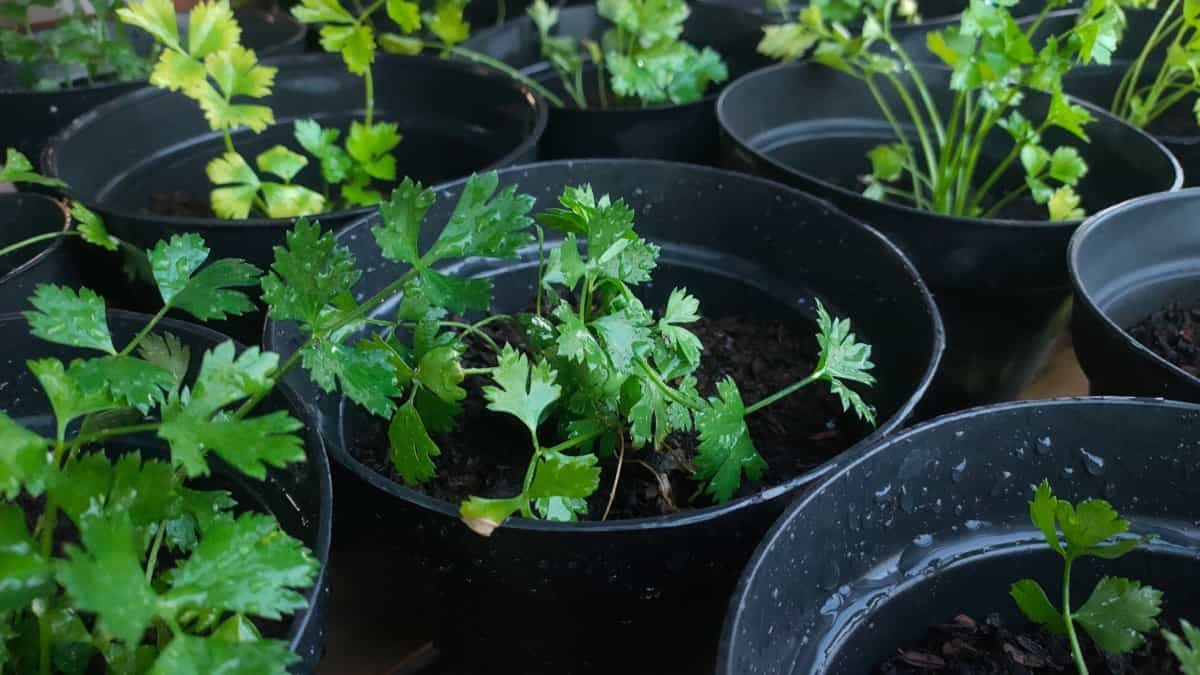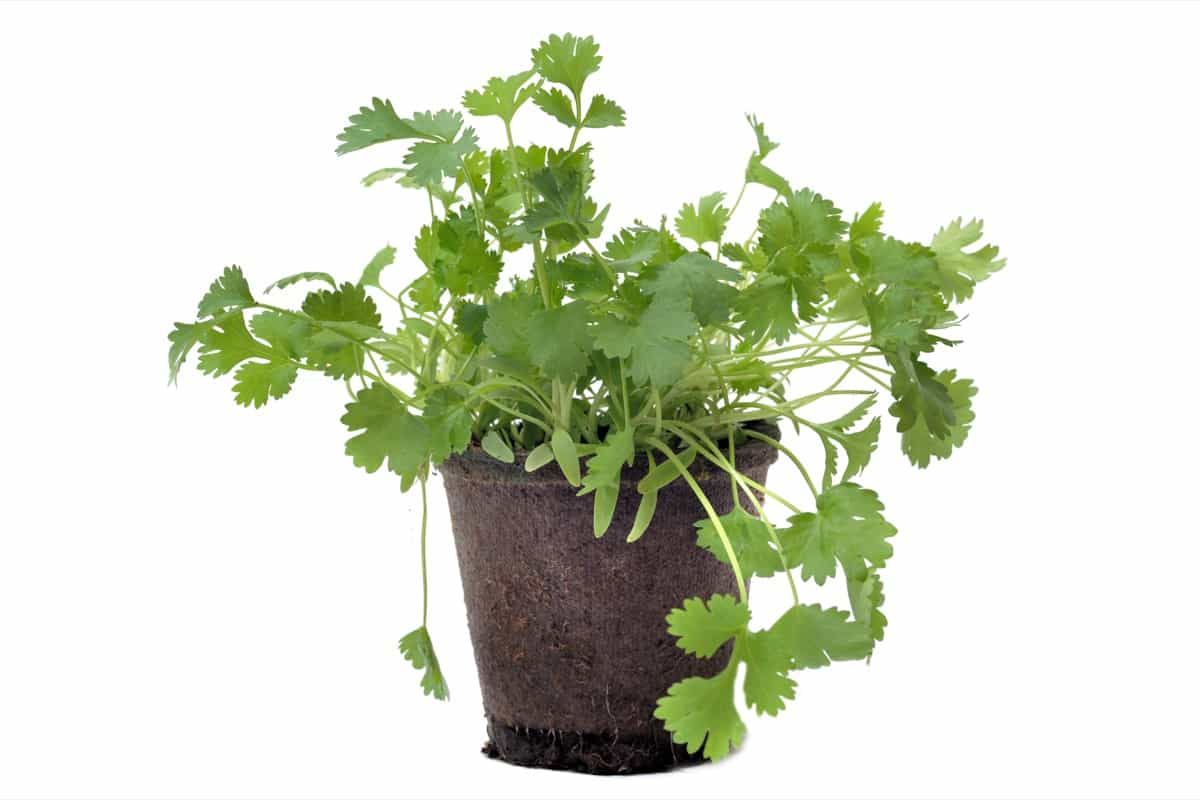When it comes to growing healthy and flavorful Coriander or cilantro plants in pots, fertilization is vital in providing the necessary nutrients for their growth. This document will explore the options for organic and natural fertilizers, including homemade alternatives. Also, we will discuss the importance of understanding the NPK ratio and guide on when and how to apply fertilizers to your potted coriander plants.
Fertilizing Potted Coriander/Cilantro
Organic Fertilizers for CorianderPlants in Pots: Nurturing Your Plants Naturally
When it comes to choosing organic fertilizers for your coriander plants, there are several options available. One popular choice is compost. You can make your compost by collecting kitchen scraps, yard waste, and other organic materials. Once these materials decompose, you can use the resulting compost to fertilize your coriander plants. Simply mix the compost into the potting soil or sprinkle it around the base of the plants. Another organic fertilizer option for coriander plants is worm castings.

Worm castings, also known as vermicompost, are the waste produced by earthworms during the decomposition of organic matter. They are highly nutritious and contain beneficial microorganisms that help improve soil health. You can either purchase worm castings or set up a worm composting system at home to produce your own. Mix worm castings as fertilizer into the potting soil or create a vermicompost tea by steeping them in water and then watering your coriander plants with the nutrient-rich liquid.
Natural Fertilizers for Coriander/ Cilantro Plants in Pots: for Environmentally-friendly Options
One such option is seaweed extract. Seaweed extract is derived from seaweed and is rich in essential nutrients, trace elements, and plant growth hormones. It can be applied to coriander plants by diluting it in water and using it to water the plants. Seaweed extract provides nutrients and helps improve the plant’s resistance to diseases and pests.
Another natural fertilizer option is fish emulsion. It is made from the remains of fish that have been processed for other purposes. It is a concentrated source of nitrogen, phosphorus, and potassium, essential nutrients for plant growth. To use fish emulsion as a fertilizer, dilute it in water as per the instructions on the label and apply it to the coriander plants.
Homemade Fertilizers for Coriander/ Cilantro Plants in Pots: DIY Solutions for Optimal Plant Health
Epsom salt solution: Epsom salt, or magnesium sulfate, can be used as a homemade fertilizer for coriander plants. Dissolve 1 tablespoon of Epsom salt in 4 liters of water and use this solution to water your plants once a month. The magnesium and sulfur in Epsom salt will help enhance chlorophyll production, leading to greener and healthier coriander plants.
Eggshell fertilizer: Eggshells are a rich source of calcium, a nutrient vital for strong cell walls in plants. To make eggshell fertilizer, collect and rinse eggshells thoroughly. Crush the eggshells and sprinkle around the base of your coriander plants. The eggshells will slowly release calcium into the soil, providing a long-lasting source of nutrients for your plants.
NPK Ratios and Their Importance in Selecting Fertilizers for Coriander/ Cilantro Plants in Pots
One important factor to consider while choosing fertilizers is the NPK ratio, which refers to the proportions of nitrogen (N), phosphorus (P), and potassium (K) present in the fertilizer. For Coriander, 12-4-8 is the best option. The NPK ratio plays a significant role in the growth and development of coriander plants. Nitrogen promotes leaf and stem growth, which is crucial for Coriander as it is primarily grown for its leaves.
In case you missed it: Hydroponic Coriander/Cilantro Farming in a Greenhouse: Key Rules to Start from Scratch

Phosphorus is required for root development, flowering, and fruiting, ensuring that the coriander plants establish a strong root system and produce abundant flowers and seeds. Potassium, on the other hand, aids in overall plant health, disease resistance, and the production of essential oils in the leaves, giving Coriander its characteristic flavor and aroma.
Table for Fertilizing Potted Coriander/ Cilantro Plants: Organic, Natural, Homemade, NPK Ratio And When to Apply
| Type of Fertilizer | Fertilizer | When to Apply |
| Organic | Compost, Worm castings | Spring and Fall |
| Natural | Seaweed extract, Fish Emulsion | During growing season |
| Homemade | Epsom Salt, banana peels | During growing season |
| NPK ratio | 12-4-8 | Three splits/ season |
Slow-release Fertilizers: Enhancing Nutrient Availability for Coriander/ Cilantro Plants in Pots
When selecting a slow-release fertilizer for coriander/cilantro plants in pots, it is important to consider the nutrient composition. Look for a fertilizer that has a balanced mix of nutrients, including nitrogen, phosphorus, and potassium. These macronutrients are vital for plant growth and development. Additionally, slow-release fertilizers often contain micronutrients like iron, manganese, and zinc, which are essential for plant health. These micronutrients are crucial in various physiological processes, including photosynthesis, enzyme activation, and nutrient uptake.
pH Levels and Fertilizer Selection for Coriander/ Cilantro Plants in Pots: For Balanced Soil Environment
To determine the pH level of your potting soil, use a pH testing kit available at most gardening stores. Test the soil before planting your Coriander to ensure it falls within the desired pH range. If the pH level is below 6.0, the soil is too acidic; if it is above 7.0, it is too alkaline. In such cases, you will need to adjust the pH level to create a balanced environment for your coriander plants.
Add wood ash to raise the pH of acidic soil. These substances help to neutralize the acidity and bring the pH level closer to the desired range. Conversely, to lower the pH level of alkaline soil, you can incorporate elemental sulfur or acidic organic matter like peat moss or compost.
The Importance of Timing: When to Apply Fertilizer to Coriander/ Cilantro Plants in Pots
Timing is crucial when fertilizing coriander/cilantro plants in pots. To ensure optimal growth and development, apply fertilizer at the right stage of plant growth. It is recommended to fertilize coriander/cilantro plants when they have reached the four-leaf stage or after approximately four weeks of growth. Applying fertilizer too early may result in burning the delicate roots, while applying it too late may hinder the plant’s overall productivity.
In case you missed it: Frequently Asked Questions About Coriander/Cilantro Farming

How to Apply Fertilizer to Coriander/ Cilantro Plants in Pots: Techniques for Maximum Effectiveness
- Use a measured amount: Follow the instructions on the fertilizer packaging to determine the appropriate amount for your pots. Overfertilizing can lead to nutrient imbalances and plant stress.
- Apply evenly: Spread the fertilizer evenly over the soil surface, avoiding direct contact with the plant stems or foliage. This helps prevent burning or damaging the plants.
- Incorporate into the soil: Gently work the fertilizer into the top layer using a small garden fork or by lightly raking the surface. This helps the nutrients penetrate the root zone more effectively.
- Water thoroughly: After applying the fertilizer, water the pots thoroughly to ensure the nutrients dissolve and reach the plant roots. This also helps prevent fertilizer burn and leaching.
Water-soluble Fertilizers for Potted Coriander/ Cilantro Plants
Water-soluble fertilizers are an excellent option for potted coriander/cilantro plants as they provide quick and readily available nutrients. These fertilizers come in a powdered or granular form that dissolves easily in water. To use water-soluble fertilizers, follow the manufacturer’s instructions for mixing the appropriate amount in water. Apply the solution to the soil around the coriander/cilantro plants, ensuring to saturate the root zone thoroughly. Using water-soluble fertilizers allows for controlled nutrient uptake, ensuring the plants receive a consistent supply of essential nutrients for healthy growth.
In case you missed it: Fertilizing Potted Rosemary Plants: Organic, Natural, Homemade, NPK Ratio, When and How to Apply

Conclusion
Understanding the NPK ratio, timing the application correctly, and following the recommended dosage are key factors in maintaining the overall health of your coriander plants. You can enjoy a bountiful harvest of coriander leaves for your culinary delights with proper care and nutrition.
- Feed Your Flock for Less: Top 10 Tips to Save on Chicken Feed
- Ultimate Guide to Ossabaw Island Hog: Breeding, Raising, Diet, and Care
- Hatching Answers: The Top 10 Reasons Your Chickens Aren’t Laying Eggs
- Eggs and Economics: Breaking Down the Cost of Raising Backyard Chickens
- Defend Your Greens: Proven Methods to Keep Iguanas Out of Your Garden
- Ultimate Guide to Cinnamon Queen Chicken: A Comprehensive Guide for Beginners
- Ultimate Guide to California Tan Chicken: Breeding, Raising, Diet, Egg-Production and Care
- Ultimate Guide to Marsh Daisy Chicken: Breeding, Raising, Diet, and Care
- 10 Types of Chicken Farming Businesses You Can Start for Profits